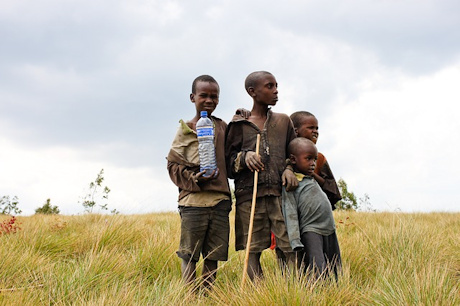Travel to Burundi, one of Africa’s smallest countries, to a land of mountain peaks, plains, rainforest and farmland. But against this backdrop, Burundi has been blighted by years of conflict and civil war. Our printable activities below are the perfect way to test your knowledge.

A Little Geography…
- Burundi is a land-locked nation in Central Africa surrounded by Rwanda, Tanzania, and the Democratic Republic of the Congo. The capital is Bujumbura.
- It has a population of around 10 million people, known as Burundians, living in an area of about 28,000 square kilometres. The country is very crowded and a lack of natural resources has been a challenge to the economy.
- Burundi’s highest peak is Mount Heha, at 2,684 metres. Two important water sources are Lake Victoria and Lake Tanganyika. The country also boasts three national parks, which are home to a variety of animals such as elephants, hippopotamuses, crocodiles and lions.
- The official languages are Kirundi and French, although Swahili is spoken in some areas.
- Most people in Burundi are farmers, but deforestation, soil erosion and habitat loss are threatening the industry. More than half of the population make a living from growing coffee beans, but tea, sugar and cotton are also important exports.
A Little History…
- Between the 7th and 10th centuries, the Hutu people lived in the Burundi region. Later, in the 15th and 16th centuries, the Tutsi people joined them. Today, although most people are Hutus, the Tutsis hold most of the government and army positions.
- The Europeans arrived in 1856, but it took another 40 years for them to take control, when Germany began to rule the region known as Ruanda-Urundi. Belgium then took over during the First World War.
- Burundi became independent in 1962, but the country experienced many power struggles in the years that followed. In the 1990s, Burundi endured a terrible civil war fought between the Hutus and Tutsis. When the war ended in 2006, over 150,000 people had been killed.
- Although peace was restored, conflict returned in 2015 when President Nkurunziza tried to secure a third term in office, which many people thought was illegal.
And Some Interesting Facts…
- Burundi joined the Olympic Games in 1996. They won a gold medal in 1996 and a silver in 2016 – for athletics, the 5,000 metres and 800 metres respectively.
- Burundi is home to a famous man-eating crocodile called Gustave, who is said to have killed around 300 people on the banks of the Ruzizi River and the shores of Lake Tanganyika. At seven metres long, Gustave is thought to be the largest crocodile in Africa, and perhaps the world – and is greatly feared!
The Burundi Flag

The Burundi flag was officially adopted on June 28, 1967, and has white diagonal cross divided into four panels, two red (top and bottom) and two green. The three red stars in the white central circle of the flag represent the three ethnic groups that live in the country; the Hutu, Tutsi and the Twa. The red sections of the flag represent the independence struggle, the green stands for hope and the white for peace.
Our Burundi Resources
The Burundi flag is quite unusual, but not too difficult to colour in. Grab a bright green and a bright red pencil, and print it out...
Print out the flag of Burundi in four different sizes here.
Burundi is quite small and tricky to find on a map of Africa! Younger kids can try the guided version of our worksheet, and the older children can attempt the more challenging blank version.
Burundi is quite a small country, so we've coloured it in bright red so the kids can locate it more easily on this map of Africa.
Find out some facts about Burundi to fill in this fact worksheet, which also includes some location practise.

